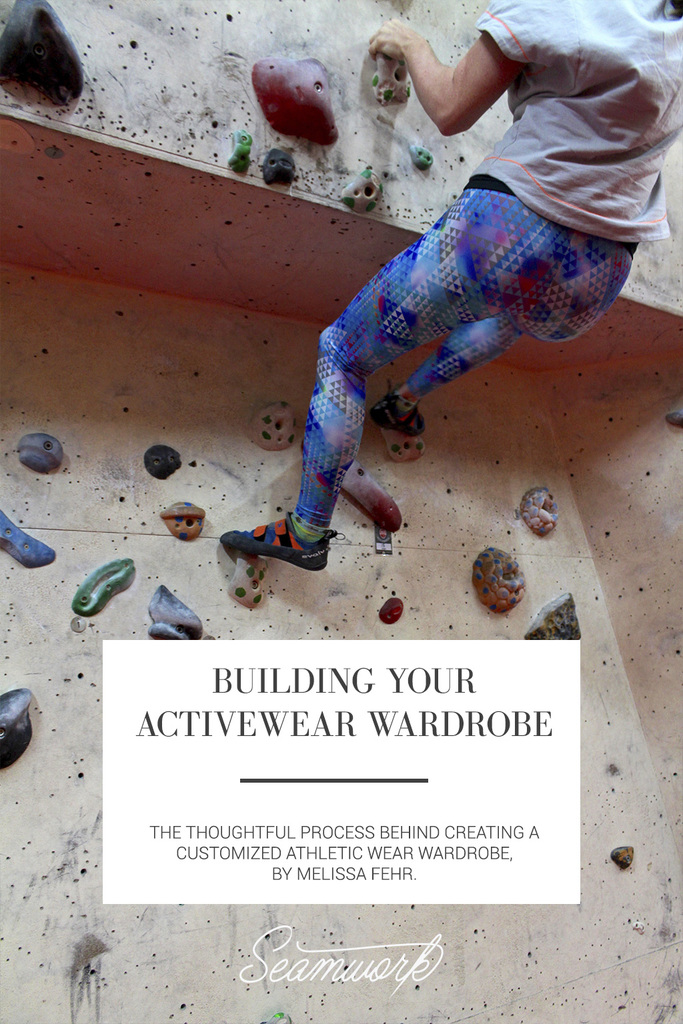When planning upcoming sewing projects, we tend to take many options into consideration:
- What designs interest me?
- Will this pattern fit my lifestyle?
- What alterations will I need to make?
- Will this fabric be suitable for the garment?
- Is this color or pattern attractive to wear?
Some of us might also start to think about when the garment may be worn, and if, say, whether a pullover will be warm enough to be worn in winter, or if polyester might be too clingy in humid conditions. For the most part, these questions are largely either about the pattern or the fabric, but rarely are they about the activity being undertaken while it’s worn. Very few sewists actually think about the body movements involved when a garment will be worn, and it’s largely only those who encounter repetitive movements throughout the course of a day, such as a teacher continually raising her arms to write on a board, or a woman using a wheelchair and therefore constantly in a seated position, who might notice ways in which future garments could be improved.
For the most part, casual wear garments do a pretty good job at allowing general movement, and even formalwear these days is designed to work well while standing, sitting, and dancing (though let’s not forget that the traditional cocktail dress was designed to only be worn while standing!). But when it comes to creating garments for exercise, movement must be considered as a priority at the beginning of the design process, and patterns and fabric may very well need to be carefully chosen in order to prevent discomfort, chafing, overheating, and most embarrassing of all, wardrobe malfunctions during the course of your exercise.
In this article, we’ll take a look at five common types of activities and examine the movements involved in each. We’ll also examine fabric considerations and some great pattern suggestions to get you started on building your own-sewn activewear wardrobe, no matter what gets you moving.
01 Section
Running
Running may arguably be the most challenging sport to design clothing for, due to its unique combination of high impact, repetitive motion, and high aerobic intensity.
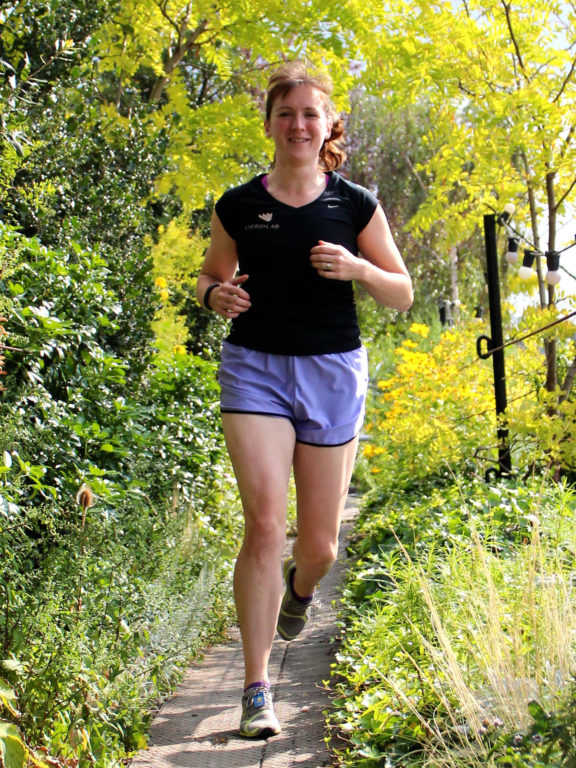
The author running in her Threshold Shorts pattern.
Flexibility, stretch, and recovery are all important factors when considering a fabric to be worn while running. If you’ll be running for a long time or in hot and humid conditions, a breathable fabric that wicks sweat away from the body is key to feeling comfortable and dry, as well as helping to prevent chafing. In absolutely no circumstances should you use cotton fibers for running or other activities that cause you to produce a lot of sweat. Cotton will hold onto moisture, which can cool very quickly once you’re done exercising.
Another, more aesthetic point to consider when shopping for fabric is that running garments will ideally be close-fitting, so your chosen fabric must hold its print and opacity when stretched, or else the areas most stretched around the body will appear either faded, or even worse, transparent! The fabric must also have excellent recovery; otherwise, long areas, which move the most, like the knees, will become stretched out and saggy. Some people are more prone to chafing than others, but chafing can be reduced at the planning stages by altering pattern seamlines away from areas which can rub and cause problems (like between the upper thighs or underarms). You can also avoid this by merely making seams as flat as possible or avoiding thick seam intersections.
Cotton is extremely hydrophilic, holding up to twenty-five times its weight in water, and takes an exceptionally long time to dry. If you’ve ever had the misfortune of wearing jeans to a waterpark, then you know they can still be damp at the end of a day! Once wet, cotton can lead to chafing in hot weather, or even worse, hypothermia in cold weather, which can cause death. Avoid cotton in all your activewear including socks, as it can lead to nasty blisters.
Even the smoothest of professional runners bounce as they run, and keeping the bounciest areas of your body from moving and becoming damaged over time should be a primary concern. For all women (yes, even the least-endowed), this means wearing a sports bra, which eliminates all movement in the breast tissue. If you can see movement as you jump in front of a mirror, you need to buy a more supportive sports bra, whether it’s the traditional compression style, or the more engineered encapsulation style. Before selecting your pattern size for any activewear top, you should also re-measure your bust while wearing your sports bra, especially if you prefer the compression-style.
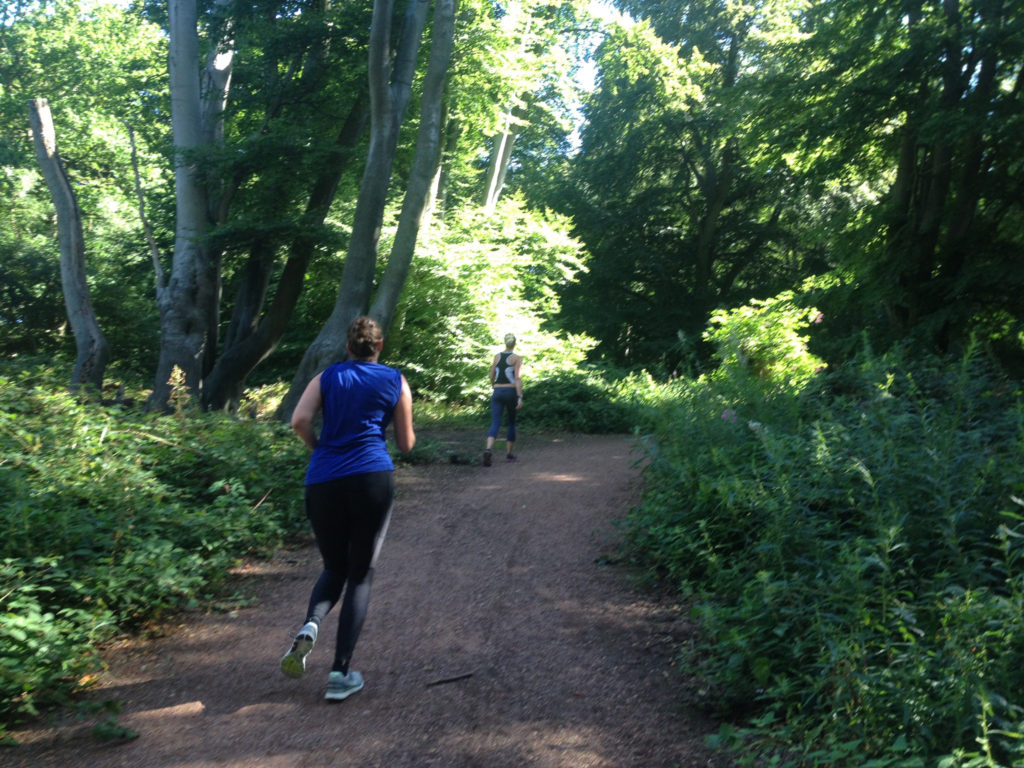
Pattern Suggestions
-
Jalie 2796: Multi-Sport Skort - FehrTrade Threshold Shorts
- KwikSew 3636
-
Jalie 3462: Cora Running Tights and Shorts - FehrTrade XYT Workout Top
02 Section
Cycling
Cyclists face many of the same challenges as runners—repetitive movements over long periods of time with high-cardio activity, but since speeds on a bike can reach far greater than those on foot, wind is also a major factor in choosing fabric.
The breeze created from cycling can be a bonus when riding in warm weather, but cycling in cold weather can result in very cold extremities if a wind-proof outer layer is not used. Many cyclists choose to dress in layers, with a breathable, wicking layer closest to the body, which keeps the sweat away from the skin, as well as a wind-breaking jacket or cape to keep the body heat inside.
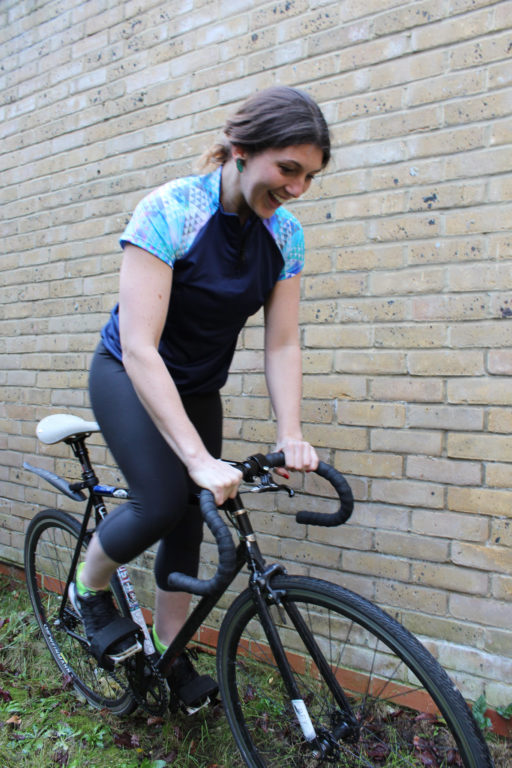
Multi-sport athlete Emily Ackner.
Cycling is a low-impact sport, but the posture adopted in the saddle is far different than the standing position many patterns draft for. Unless you’re using a pattern specifically designed for cycling or another seated pursuit (such as horseback riding), you may find you have to adjust the pattern to fit your cycling posture. While riding, the body is largely seated, which requires an elongated center back length/rise. In addition, the arms are thrust forward to place the hands on the handlebars, requiring a broader back than normal. Additionally, many cyclists may subconsciously move their head forward as they ride, making the front neckline uncomfortable and requiring either a forward protruding neck adjustment, or the addition of a half zip at the neckline to allow the height to be adjusted.
Pattern Suggestions
- Green Pepper Bicycle Racing Jersey
- FehrTrade Duathlon Shorts
- Jalie 2682
- Sewaholic Cypress Cape
- Green Pepper Oregon Biking Shorts
03 Section
Horseback Riding
Like cyclists, equestrians are largely in a seated or semi-standing position, and can experience windchill while moving at high speeds. As such, equestrians may choose to take the same approach as cyclists when selecting fabrics, choosing breathable and wicking base layers combined with a warmer or weatherproof outer layer.
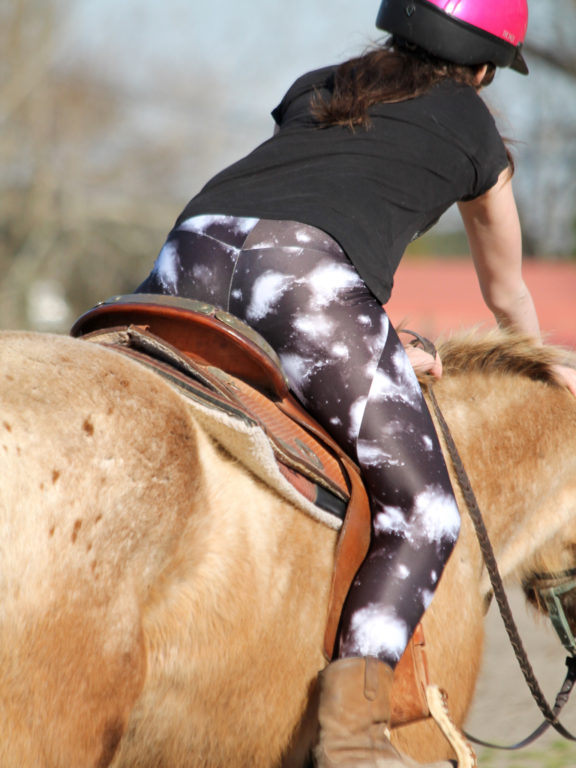
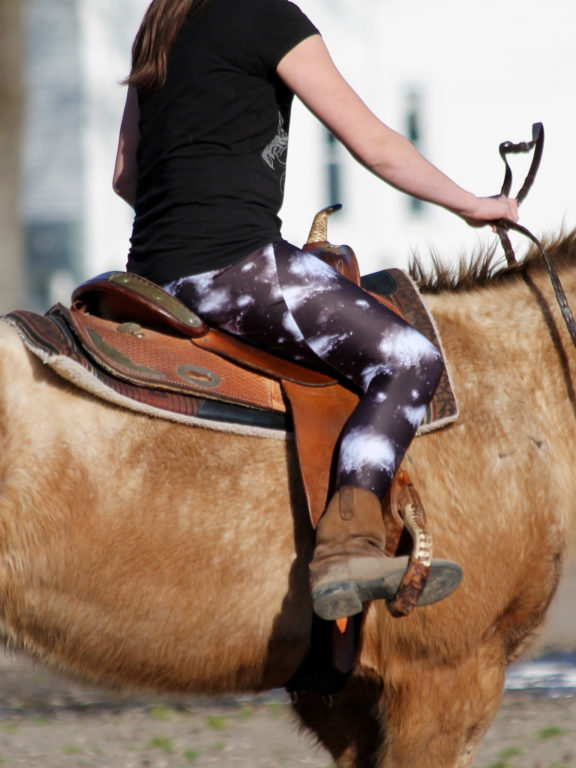
The Steeplechase Leggings worn in the saddle.
But unlike cyclists, riders’ legs remain mostly stationary, and the bounce needs of equestrians are far closer to those of runners. In terms of sports bras, equestrians should look for high impact designs in either a compression or encapsulation style that will allow the breast tissue to remain stationary, even at a gallop.
But riding a horse is clearly not the same as riding a bicycle, despite the similar posture, and so equestrians must also consider the needs of the saddle and tackle when thinking about garments for the lower half of the body. Unlike a bike seat, which is thin and moves in a predictable way, an equestrian may find herself slipping and sliding against the saddle to maintain position while the horse moves beneath her. Traditional riding trousers (jodhpurs) are made from suede, where the body comes in contact with the saddle, but modern riders can increase grip in spandex leggings by applying silicone paint or sealant in small dots or patterns around the seat and inner thigh area. Utilizing the brightly colored paints designed for slippers or socks can open up a whole new range of print and design opportunities on top of the usual fabric choices, too.
Some equestrians may experience chafing or irritation in the inner thigh where the leg meets the saddle, and this can be greatly reduced by choosing close-fitting pants or leggings with either flatlocked inner thigh seams or even better, no inner thigh seams at all. Traditional riding trousers have panels in the inner leg area rather than inseams for this very reason, and inserting a long panel in place of an inseam is a fairly quick pattern alteration that allows you to avoid discomfort further down the road. Like cyclists, equestrians may also wish to elongate the center back seam to ensure the waistband sits level while in a seated position. This is often just a case of extending the pattern’s center back seam upward by a few inches before attaching the waistband.
Pattern Suggestions
- Simplicity 1361
- Seamwork Camden Cape
- FehrTrade Steeplechase Leggings
- SuitAbility Western Stretch Show Shirt
- Jean Hardy English Riding Pants
04 Section
Yoga
What could be more relaxing and fulfilling than a good yoga session? Unless, of course, you’re spending it worrying whether the person next to you can see down your top as you downward dog, or whether your crotch seams can withstand the monkey pose you’ve spent months achieving!
The low-impact nature of yoga may mean that there are a wider variety of suitable fabrics and design styles available, but you’ll still need to consider all the movements your body goes through in an average class in order to anticipate your own garment needs.
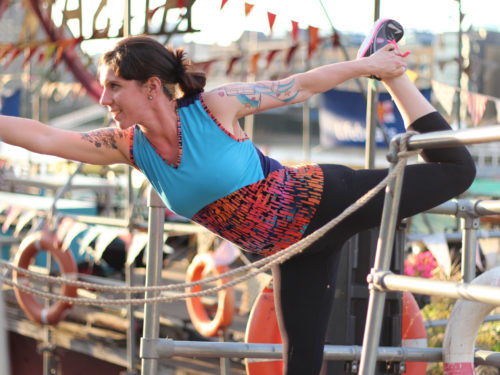
Athlete Anne Bowman wearing the VNA Top pattern.
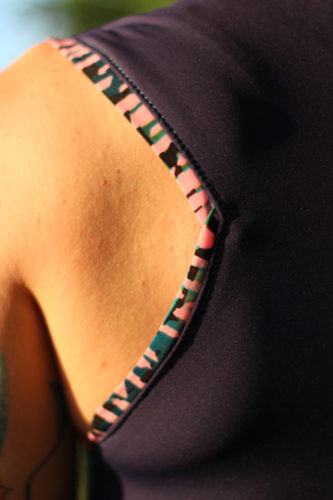
First, consider your own comfort: Do you prefer loose-fitting styles, or are you more at ease exercising in body-hugging clothing? If you prefer to cover up with a loose top or trousers, you should only consider garments whose openings are close to the body, so that you don’t put too much on show as you lean over or upside-down. Most patterns can be altered to provide a higher neckline or armscyes, or in the case of sleeved tops, just ensuring the sleeve openings or sleeve bands are close fitting enough to stay in place as you move.
Your preferred style of clothing will influence the fabric choices you make, but also think of the type of environment your favorite studio is in. If you’re usually in a hot and humid Bikram yoga studio, you’ll definitely want to look for breathable wicking fabrics to allow your sweat to evaporate rather than cling to you. Also consider what will happen after you’ve finished working out. If you know it’ll take an hour before you can get home to shower afterwards, you’ll also need to think about a warm cover-up to keep from getting chilled as your body cools down.
Yoga requires the body to go through a wide range of motions, with both the arms and legs held in positions not normally encountered in day-to-day life. Gussets are a great way of adding flexibility and range of motion to a pattern precisely where it’s needed most, usually either in the underarm seam to allow greater arm movement, or in the crotch seam of close-fitting leggings to allow your legs to do a split without the seam doing the same! Either look for a pattern that incorporates a diamond-shape gusset piece, or alter your favorite pattern to increase the range of motion. Gussets are sometimes over-used in ready-to-wear activewear to disguise a poor crotch fit, so be sure to adjust your pattern to fit you as the first step before adding a gusset to increase your range of motion.
Pattern Suggestions
- KwikSew 3988
- Named Manta Wave Leggings
- Seamwork Manila Leggings
-
McCalls 4261: Yoga wardrobe and mat bag - Greenstyle Creations Jillian Tank
05 Section
Climbing
Humans have been climbing for as long as there have been mountains to scale and cliffs to dangle from, but the modern climbing and bouldering scene has considerably risen in popularity in recent years. Go to any climbing wall and you’ll find men and women climbing in just about every style of clothing imaginable, from T-shirt and jeans (albeit specialist climbing jeans!) to head-to-toe Lycra and everything in between.
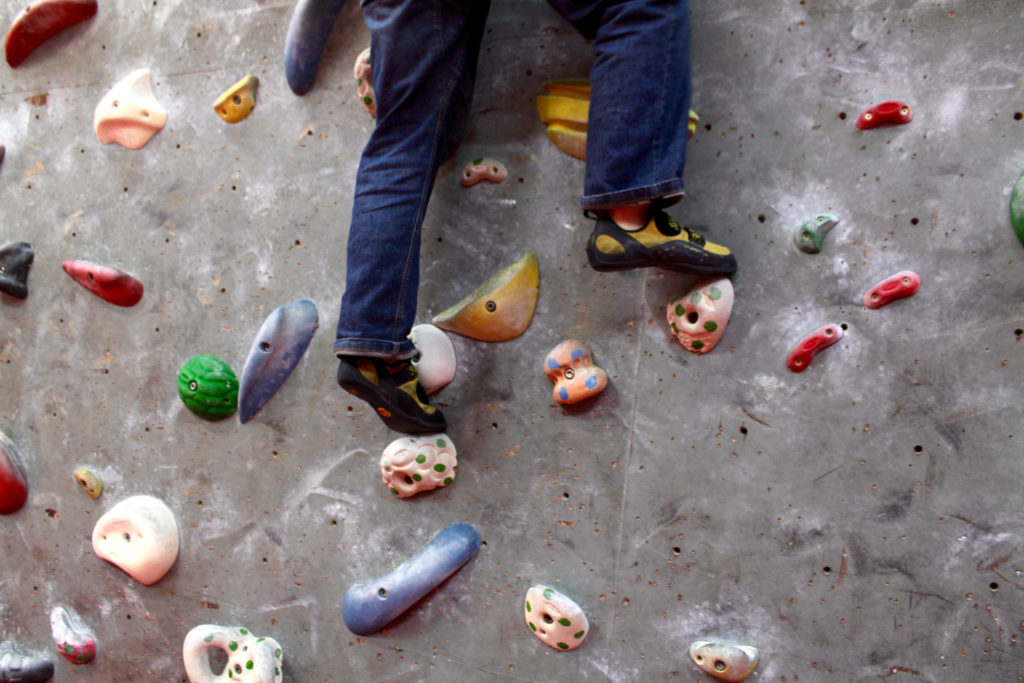
Bouldering in specialized jeans.
The most important thing to consider when sewing for your climbs is whether you’ll be using harnesses. Many climbing centers only offer walls up to five to six yards high, and therefore don’t require any ropes or safety harnesses to be worn over top of your clothing. This means you can wear just about any clothing that doesn’t impede range of motion or contain loops or wide openings, which may cause clothing to get caught on grips as you jump or fall. For such bouldering centers, you can really just concentrate on fabrics that work for the temperature of the center and allow your limbs to move freely. Like yoga, look for leggings or trousers with a crotch gusset to allow freedom of movement, or incorporate one into your own favorite casualwear pattern to make them climbing friendly. Some ready-to-wear climbing pants have gussets reaching down to the knees on either side to allow wide split motions in non-stretch fabrics.
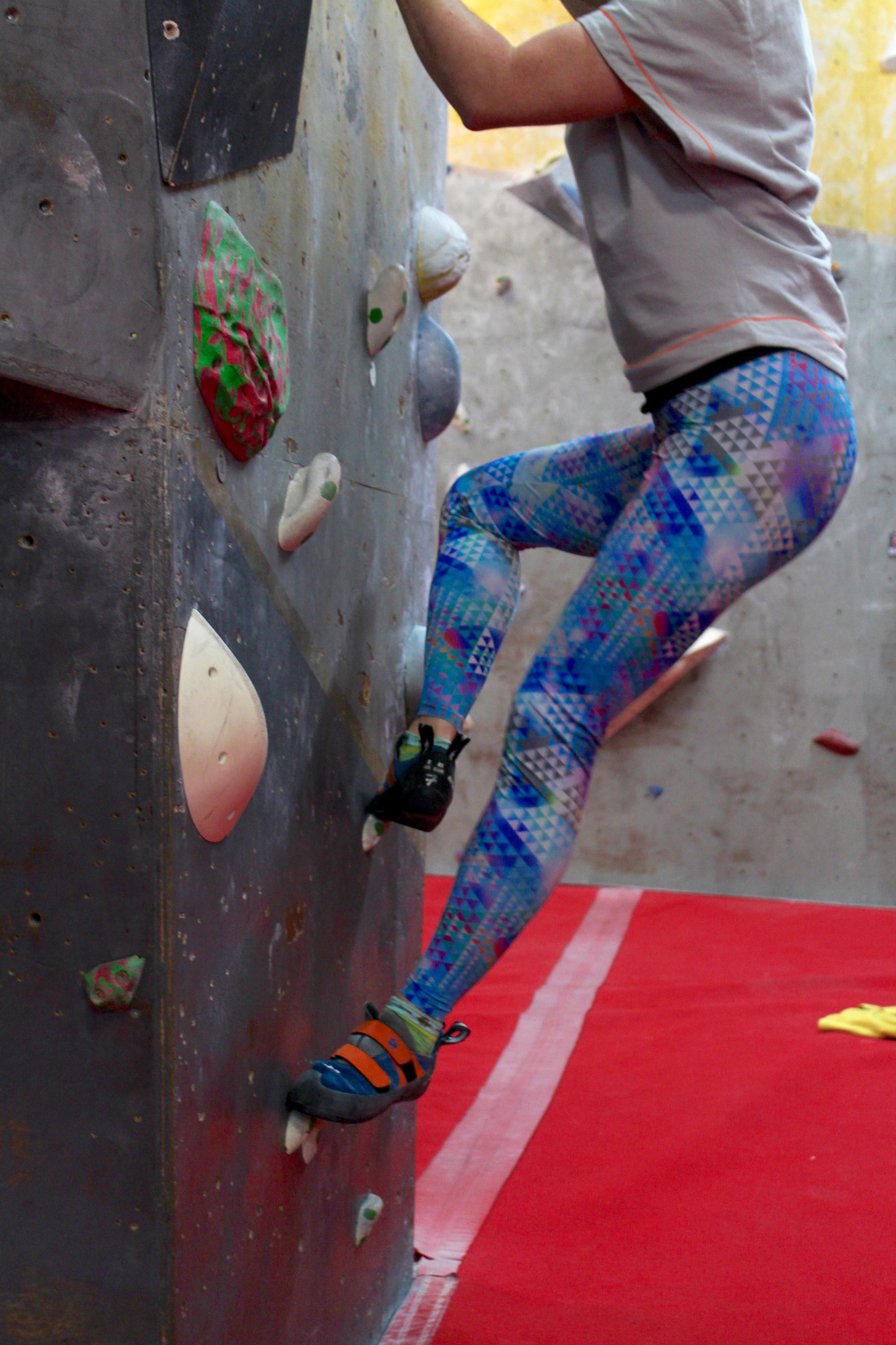
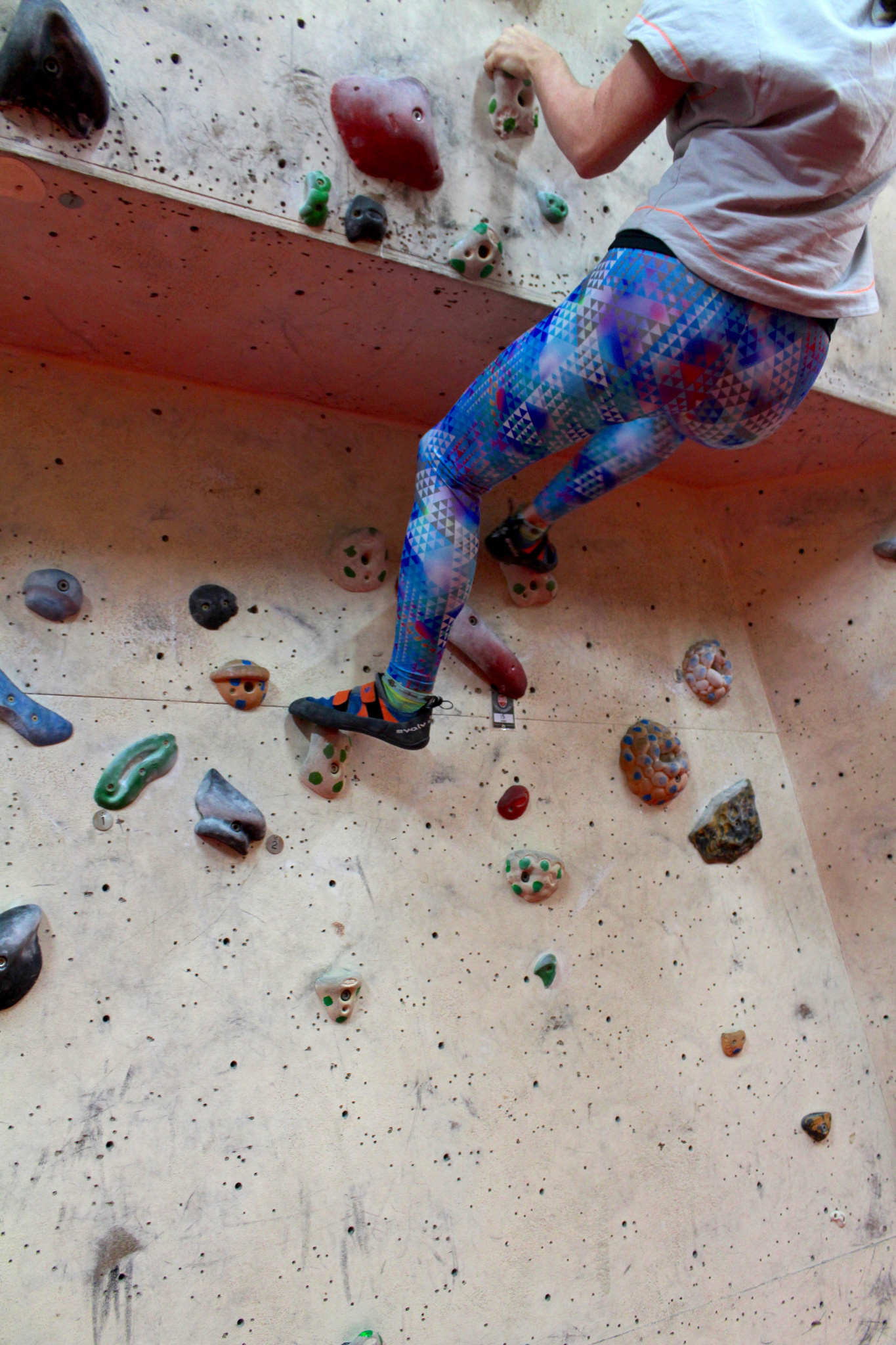
The author climbing in KwikSew 3636 and her Kimono Sweat pattern.
Most people associate climbing with a lot of upper body and arm strength. While most climbers use their legs just as much as their arms and core strength, after a while, climbers can develop strong upper back and shoulder muscles not dissimilar to keen swimmers. As such, they may find crossover-back styles that don't impede the trapezius muscles are more comfortable than the standard racer-back.
Pattern Suggestions
- Papercut Pnuema Tank
- FehrTrade Kimono Sweat
- Greenstyle Creations Inspire Tights
- Green Pepper Striped Tights
- True Bias Hudson Pants
There isn’t space to cover every sport or activity, so if your favorite way of getting sweaty wasn’t covered here, you can still apply the following principles and questions to get started sewing your own perfect activewear for the task:
- Think about the environment you’ll be exercising in, and what sort of properties your fabrics will need to have.
- Think about the posture and movement used during your activity, and what sort of motions your garments will need to go through. Adjust your base pattern accordingly.
By taking these two principles into consideration alongside your usual, personal design aesthetic, you’ll be well on your way to creating your own custom-fit activewear that’s up to the task at hand.


